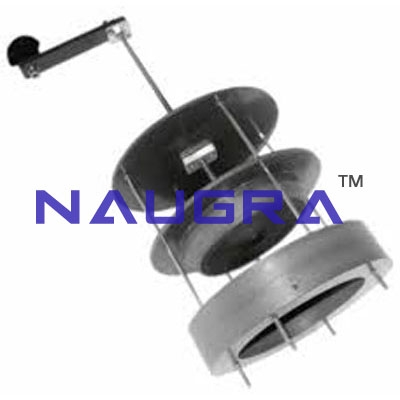- Civil Lab Mechanical Lab Engineering Lab Equipments
- sales@didacticlabequipments.com

CAT NO: DIDACTICNLE-Export-205102
EXERCISES AND PRACTICAL POSSIBILITIES
Some Practical Possibilities of the Unit:
1.-Measurement
of constant-speed machinc performance in terms of static and total
pressures, rotor speed and motor shaft power, as a function of inlet
flow.
2.-Calculation of flow with and orifice plate.
3.-Calculation of the fan efficiency.
4.-Introduction to similarity laws for scale-up.
5.-Calculation
of the flow by static pressure measurement, dynamic pressure
measurement and total pressure depending of the test.
6.-Practices with the different turbines: with the blades forwards, with the blades backwards and with flat blades.
7.-Determination of the fan characteristics curves.
8.-Calculation of the typical curve of a fan at a constant turning speed (turbine with blades forwards).
9.-Calculation of the typical curve of a fan at a constant turning speed (turbine with blades backwards).
10.-Calculation of the typical curve of a fan at a constant turning speed (turbine with flat blades).
11.-Measurement of performance at constant speeds.
12.-Static pressure increasing.
Other possible practices (with the optional Set of Accessories):
13.-Calculation of flow. Test with discharge duct and nozzle.
14.-Calculation of flow. Test with aspiration duct and nozzle.
15.-Calculation of the differential flow according to the turbines position in the discharge duct.
16.-Calculation of the differential flow according to the turbines position in the aspiration duct.
17.-Determination of the fan characteristics curves (with the optional Set of Accessories).
18.-Measuring a cooling curve.
19.-Determination of the coefficient of heat transfer from the cooling curve.
20.-Measurement of the pressure distribution around a cylinder in a transverse flow.
21.-Measurements behind a cylinder in a transverse flow.
22.-Pressure loss measurements at a bend.
23.-Pressure loss measurements on pipe sections.
24.-Pressure loss measurements at an elbow.
25.-To investigate the influence of different shaped pipe inlets. Fluid Mechanics Lab Equipments manufacturers.
